The screening of the Good Design Award 2019 was implemented by the "Screening Units", the groups by design category. Here are the review texts by the Units including the trends, features or goals to aim of the category.
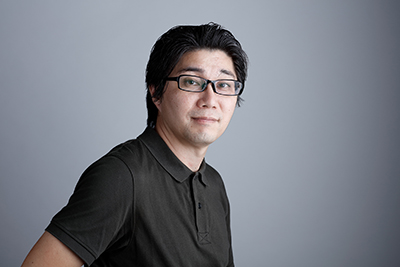
-
Product Designer
- Unit 01 : Life products (Accessories and healthcare)
01-01 Accessories and personal items / 01-02 Clothing / 01-03 Health care items / 01-04 Sanitary goods / 01-05 Beauty care equipment and instrument / 01-06 Smart watch
Unit 1’s category is "Things you wear and healthcare." Big differences are required for each of the items, such as eyeglasses, wristwatches, bags, clothes, disposal diapers, dryers and equipment related to beauty and massages, but in general there has been a visible change in what needs to be considered in product development. A requirement they all share in common is that the utensil be built on the basis of usability. Especially if you come up with a proposal for a new item that has never been on the market, even if it’s an original idea with novel features, we want you to value an approach of repeatedly examining the item from the users’ point of view. For items such as healthcare that have a close relationship with people’s bodies, it’s become important that credible evidence is gathered regarding its features and efficacy, and that the data is presented in a way that is easy for the user to understand. It’s also surely necessary for initiatives and consideration to further reduce the impact on the environment to play a large role in guiding product development. Now, as we are transitioning from a consumer society to a recycling society, there’s once more a need for the promotion of recycling materials and using materials that are a return to nature, as well as "making products that will be used carefully for a long time," to play a pivotal role in development.
Suwada’s nail clippers (19G010055) have contrived to come up with a structure that continues to maintain its sharpness, and have even suggested including a sharpening service. Muji’s towel (19G010056) has intentionally tried to standardize the pile length so that it can be used continuously for a long time with little deterioration in its features, and coming out with these types of ideas for products and services for items that are used will hopefully help change the users’ mindset. In Unit 1 there were many product ideas that placed a great deal of weight on the users’ experience, including ideas ranging from those for product items to suggestions for things. These included the viewpoints of supporting child rearing, preparing for disasters, and helping people to bring out their individual personalities. Recently, there have been big changes in the climate and social environment, so ideas for items and services that support users’ lifestyles, and create security and peace of mind, are required more and more, and this wave has affected even utensils that were conventionally thought to be satisfactory if you could just use them. We hope from here on there will be more product ideas that have the power to resonate with and create a good influence on society at large.
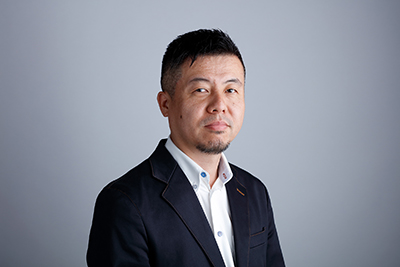
-
Designer
- Unit 02 : Life products (Kids and stationery)
02-01 Childcare goods and accessories / 02-02 Household childcare items / 02-03 Stationery and office supplies / 02-04 Teaching materials and educational supplies / 02-05 Toys
The subjects of this category were children’s goods, such as those related to child rearing and educational materials, as well as stationery and office supplies. Among those products, there are many where there is a relatively high amount of importance placed on the physical components, and many in fields that are technically mature. Therefore, they are not simply judged on the merits and demerits of the item, but a major point is how they interact with people.
For example, the "Non-slip aluminum ruler" (19G020123) that was selected in the Best 100, was a design that showed that they had given great consideration into what situations people use rulers for. When it’s used with a cutter to cut paper into straight lines, there is non-slip device on the reverse side that holds it firmly in place and makes it easy to use. However, conversely you can also slide the ruler when you are doing a succession of cuts in a number of places. Until now, no one had expected the coexistence of these contradictory features, but it has been effortlessly achieved from the scrupulous idea of cutting a slant into the reverse side of the ruler, which looks simple, and is designed so that a series of actions can take place in an extremely smooth manner.
The "Papercraft creature Gesundroid,"(19G020141) which was also chosen in the Best 100, was a design that redefined the values of handicrafts. Their approach didn’t involve a digitization of handicrafts that presently exist, but thought about handicrafts starting from zero, considered what they could be if you included current technology, then embodied this in a product that was a beautiful expression of the values of "constructing and playing."
These products that are representative of this category, have not only achieved a good balance of high levels of functionality, safety, ease of use and beautiful appearances, but they are also easy to understand representations of what the values of the things themselves are. That is to say, this ruler was not just an object designed to cut paper, but was designed for the very idea of "cutting paper straight." The Gesundroid was also designed for the very idea of "constructing and playing," so the digitization is not an unpleasant aspect but a natural part of the product.
The environment surrounding these products has changed greatly, and the state of education has also been greatly transformed. In this world, even for these products from fields that value the physical components, the design is not just an embodiment of the form, but seems to represent an act that is the embodiment of the values.
""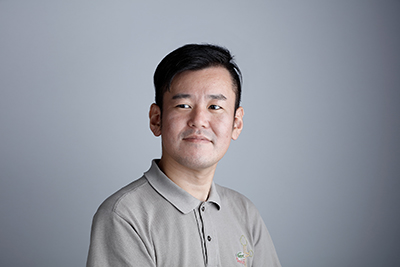
-
Buyer, Director
- Unit 03 : Life products (Leisure and hobby)
03-01 Sporting goods / 03-02 Leisure/Outdoor/Travel goods / 03-03 Hobby goods and pet care supplies / 03-04 Accessories for smartphones, personal computers and cameras / 03-05 Garden tools / 03-06 Audio equipment and music instruments
Unit 3 deals with the fields of leisure and hobbies, and this year the passing rate was high compared to the Good Design Awards as a whole. In recent years, since the area of audio equipment and musical instruments have been included, this unit’s passing rate has been on a relatively upward trend. Also, as Second Screening Panels were carried out in China, Hong Kong, Taiwan, and South Korea, there were not many items that were the subject of Japan’s Second Screening Panel. In other words, like the consumer electronics’ unit, it seems applications from Asian countries like China have been steadily increasing in this unit’s area, especially for audio equipment, and those centered around accessories related to smartphones, personal computers, and cameras.
The overall impression of the Second Screening Panels was that the fields that stood out were leisure, outdoor and travel goods. Especially in regards to the outdoors goods, there were many applications and awards for each company, such as the Snow Peak Company, with the result it made us realize once again its recent rise in popularity, along with the vibrancy of the market. And, this year the field of gardening goods is fighting hard, even in comparison with pets supplies, which could be said to reflect recent trends. Finally, in the field of audio equipment and musical instruments this year, both the applications and awards were extremely satisfactory. Conversely, despite the upcoming hosting of the Tokyo Olympics and Paralympics, there were not many applications or awards for sports goods, which was a rather disappointing result. Furthermore, we got the impression that the markets for the fields of travel goods, and accessories related to smartphones, personal computers and cameras, were entering into a stage of maturity and a period of transition.
Finally, a characteristic that was seen in the products from this unit that were selected for this year’s Best 100, was that positive renewal was achieved for many products, as substantial revisions were made to even the finer details of products that have been staples for many years and previous models. Retaining the positive legacy of the past, while altering certain parts to match the modern era, leads to solid innovation. This type of approach will surely become increasingly necessary in future product development.
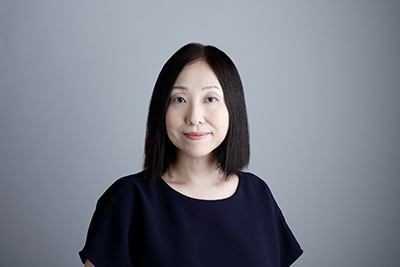
-
Journalist
- Unit 04 : Life products (Kitchen tools and daily necessities)
04-01 Kitchen goods, cookware, tableware and cutlery / 04-02 Daily necessities
Kitchen items and daily necessities were screened in Unit 4, and through these familiar items you can see the various philosophies that the businesses and designers have towards life. There were many applications from production centers dotted around the whole country, including examples of woodworking, metal working and pottery, and one noticeable feature was the strenuous efforts of SMEs who were positively developing initiatives that utilized traditional materials and techniques that should be preserved. A variety of issues come to mind concerning the state of regional communities and industries.
Design and development are drawing out the potential of many areas that have a proud history of craftsmanship but whose industries are struggling, and we want to praise the initiatives to revitalize the production areas and expand the market. Staring with designs of bowls, one can say that the example of Arita, which changed the local situation in a big way, shows the true potential for design to open things up. (1616/arita japan) (19G040228)
Projects can be seen that give indications of future potential, like Project Hibito (19G040229) that aims to make high quality tableware and have multiple production areas and understands the power of designers and the production capability of enterprises, and hibi 10 MINUTES AROMA (19G040231), which is an initiative based on reconstructing the knowledge of a craft with a long history. There were also a vast range of ideas to help reduce the burden of housework and daily tasks that we encounter in modern life, with some knowing that there was the potential for beauty to exist in these solutions, such as the Yakusaji (medicine spoon) (19G040230). In addition, we also want to focus attention on major firms who have continued to utilize their company’s strengths while carrying out meticulous product development. (Washable cooking scales) (19G040269)
Our overall feeling from this unit was that we were able to see more proposals than we usually receive that were a balance of the appearance of the product and attempts to improve life by harnessing together business technology and the skills of production areas. Surely the background to this is that there has been an increase in product development centered around realistic situations, which picture the environment that the objects are used in. Conversely, room for improvement in research on that point can unfortunately still be seen in some of the proposals, and what we spent the most time discussing during the screening process was the significance of the initiative, of course, but also whether enough detailed effort had been given to considering the user along with realizing a desirable shape and appearance for the product. By realizing both of these aspects, empathy can be obtained and it can be something with resonance. We hope that there is further consideration of the potential for the design of familiar items, and the importance of beauty is not forgotten in the intrinsic aspects.
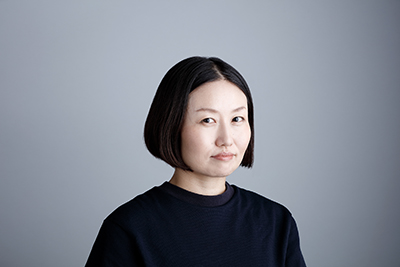
-
Designer
- Unit 05 : Home Furniture and household goods
05-01 Home furniture / 05-02 Cleaning goods / 05-03 Household nursing and rehabilitation equipment / 05-04 Emergency supplies / 05-05 Bedclothes / 05-06 Religious supplies
Unit 5 screened items that we use every day that come in a variety of sizes, ranging from small tools, like cleaning brushes, to disaster prevention products, caregiving equipment and even large furniture. Great diversity was also seen in the sizes of the companies, with B to B companies being in the majority, but also ranging from companies that were dealing with products for general users for the first time, to companies that dealt with a wide range of general daily necessities, being lined up alongside each other on the same table. How do they go about product development that aims to make an even better product, knowing it’s impossible to create the latest equipment using the latest technology? It is not an easy road to travel, but it was impressive how each company carried out product development based on a variety of ideologies and courses of action.
It was reassuring to see so many excellent disaster prevention products which was developed with the assumption that disasters would happen, and we expect they will become a part of our lives. From the point of view of sustainability, it was also good to see big improvements in packaging and corporate efforts to reduce waste. We have big hopes that others will follow their example in this regard. In the furniture division, we were particularly impressed with some excellent shelves that we saw, the integration of material technology that had been cultivated by the manufacturers over many years, and how beloved models that hadn’t been changed for decades had been updated by incorporating a smarter lighting system without changing the design at all, and we thought these ideas could serve as a development model for other businesses.
On the other hand, one thing that was discussed repeatedly during this year’s screening was that we saw a number of products that had excellent features but were lacking a certain something. Even though their specifications were more than satisfactory, they were lacking something important. These ranged from beauty, whether you could feel attached to it, the object having charm, and being easy to like. While these are aspects that can only be expressed with fairly vague words, they actually fulfill an important function of connecting people and objects together, and we think it’s the accumulation of these finer traits that becomes the future’s culture and art.

-
Product Designer
- Unit 06 : Home appliances
06-01 Kitchen appliances / 06-02 Home appliances / 06-03 Air conditioning appliances
The items screened in Unit 6 were household electrical appliances, which find themselves at the intersection between technology and the culture of everyday life. If you look back on history, it tells you that technology, which continually progresses at a high speed, is not very compatible with the culture of everyday life, which is based on traditions and evolves at a slow pace. A highly developed sense of balance is required from electrical appliance designers to ensure these two worlds don’t collide, but with the rapid advances in network technology in recent years, there has been an increase in the necessity to manage traffic from an even greater number of fields. An overview of this year’s screening panel showed that in addition to evaluating the perfection of the product itself, other factors were judged together, such as how smoothly it fitted in with its surroundings, in terms of services, networks and space, as well as whether the strength of the design enabled the creation of new interactions.
Gina (19G060302), a smart coffee maker, is a good example of how a product can be networked. The product has become lighter due to it being connected to a network and therefore eliminating the need to have all the functions on the hardware side. How to redistribute the necessary functions between people, the product and a network is surely going to become an important component of design from here on. In the future hardware may return to the original prototype form of the device through the appropriate allocation of the amount of technology.
Hitachi’s Air Purifier EP-PF120C/90C (19G060360) and Balmuda’s The Pure (19G060359) both produce a comfortable experience through their high-quality designs, and the operation of their considerately built in features such as the operating sounds and lights. In this era, where the digital and physical are combined together, hardware is once again garnering attention and products that you can actually touch are embodiments of the brand’s philosophy, so how to create a balance with people and their environment is a test of designers’ abilities.
We felt there were new signs that completely new products were about to be created from several of the applications. Mitsubushi’s Bread Oven TO-ST1 (19G060310) was a tour-de-force that made us feel that the zeal for it had broken through the conservatism of a large major company, and Nakanishi Kinzoku Kogyo’s household freezer trash box, Clean Box (19G060335) was worthy of special mention, not just for the product, but for the process of opening up a new business through the power of design. The continuing decrease in applications from Japan is perhaps a reflection of the times, but we hope that these encouraging, vibrant budding ideas, will blossom in the future at multi-layered intersections.
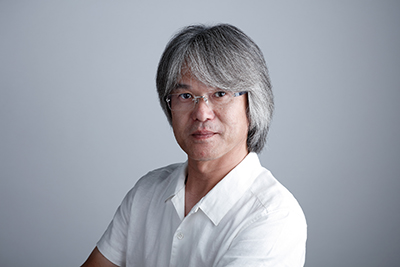
-
Product Designer
- Unit 07 : ICT equipment
07-01 Cameras, mobile phones and tablets / 07-02 Video equipment / 07-03 ICT equipment for the general public / 07-04 Broadcast and sound equipment for professional use / 07-05 ICT equipment for professional use
Unit 7 screens information devices such as PCs, smartphones, digital cameras, TVs and multifunction devices. It gathers together products with quite a high level of maturity, although state-of-the-art technology is utilized, and every year there are many applications with an extremely high degree of perfection in terms of industrial design.
One of this year’s notable features was the wave of mirrorless full-size cameras in the digital camera industry. There was an abundance of unique products with an exceedingly high degree of perfection, with each company capitalizing on their particular characteristics, and we think that this year will mark a big turning point that will change the foundation of the camera industry that Japan is so proud of. In other categories too, we saw many products where we couldn’t fault the high degree of perfection of the craftmanship, but when it came to judging them in term of this year’s theme of "beauty and the power to resonate," we thought the majority of products were more in line with the idea of "correctness," which is also the current mood in Japan.
Within the trend of the industry to see things from the point of view of beauty and design, and not just for colors and forms, but also in regards to approach, ways of thinking and solutions, it made us question what message the product has, how that message is spread inside and outside the category, and whether that is the correct thing, and these points have increased our resolution in the process of carrying out the screenings, and divided our judgements.
Consequently, products with high degrees of perfection that would previously have naturally been given high ratings have had their evaluations limited to ordinary, while products that have a beauty and the right message that exceeds their design were assessed highly, with the result that it reflects the current times where the meaning and value of the word "design" in Japanese has changed significantly.
However, this has been a year that has made us feel once again the difficulty of evaluating in the same forum the beautiful forms of things with forms, and the value of things without forms. This is a characteristic of the Good Design Awards, but it made us feel the need to keep questioning from here on what evaluation points should be shared in common over the different domains.
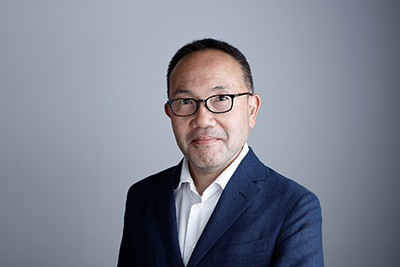
-
Product Designer
- Unit 08 : Housing fixtures
08-01 House lighting appliances / 08-02 House air conditioning machines/fixtures / 08-03 House building materials/fixtures / 08-04 House interior materials / 08-05 House exterior materials / 08-06 Kitchen fixtures / 08-07 Bathroom and wet area / 08-08 House machines/fixtures
In the field of housing equipment and building materials, where certainty and durability are prioritized, it is fairly hard to adopt new technologies or introduce new product categories to the market. However, even with this market environment, technological improvements of conventional products and responses to market changes have not been neglected, and there were many applications from products that have been steadily developed.
A phrase often used in product development for housing equipment and building materials is it "blends in well with the space," and a common expression in architectural terminology is it’s a "good or bad fit." "Blending in" expresses the degree that the object corresponds to the existing surround environment, while "fit" represents the degree one element of the space’s components interacts with other elements and how suitable the finish is within the space. The difference is seeing it from the point of view of the object or the space.
Up to now, there has been an ongoing process of increasing industrialization and prefabrication in housing equipment and building materials, mostly without inheriting traditional fits and original textures, and leading to the establishment of a unique style that prioritizes efficiency. However, in recent years there has been a change with a demand for living spaces to be more nature-oriented, and there is once more a tendency to seek the "fits" and textures that were lost through industrialization.
This year in this unit, we felt "blending in" from the objects point of view had already been passed over, but there were many displays of goods that aimed for a "good fit" as an element within a space through the reconsideration of the product, materials, manufacturing and composition, and we got the impression that new ways to create products, unique to this field, were about to be produced.
On the other hand, we also saw many initiatives that could be described as a reasonable evolution of industrialization and prefabrication. By reconsidering the boundaries and proportions of factory production and on-site construction, in combination with extracting and solving potential problems of living spaces, there were products that were not simply pursuing greater efficiency but were examples of highly advanced industrialization, and we felt the future potential of this field.
As items that form living spaces, we hope that they will continue to develop products that consider not only the form and functions, but also how things ought to be.
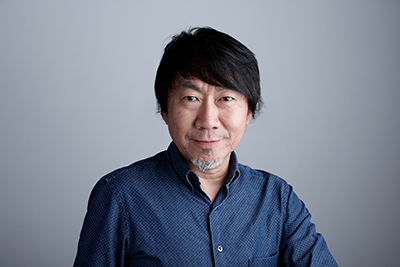
-
Design Director
- Unit 09 : Mobility
09-01 Passenger car / 09-02 Passenger car-related instruments / 09-03 Commercial vehicle / 09-04 Commercial vehicle-related instruments / 09-05 Motorbike / 09-06 Motorbike-related instruments / 09-07 Personal mobility and bicycle / 09-08 Personal mobility and bicycle-related instruments / 09-09 Railway / 09-10 Shipping / 09-11 Aircraft / 09-12 Transportation system and service (logistics / physical distribution)
The subject of Unit 9 is "tangible and intangible things related to travel" that make people’s lives richer through design, and tackle social issues. There were mobility designs that were rich in modernity and diversity, including software, invisible systems and structures, such as the Maas app, on-board diagnostic devices, and support systems for self-driving cars, as well as designs for automobiles, railways and ships. Mobility is seen as an important player in helping solve social issues, and this year various innovative suggestions were seen that rewrote the values of 20th century models, and thoroughly reconsidered the approach of overemphasizing marketing, costs, and functions, with conscientious and friendly designs that skillfully skewered the essence of travel itself. Also, while we admired the maturity level of designs, mobility designs with promise and potential that could use the Good Design Award to promote a wider general awareness and become mainstream in the future were also highly praised.
Below are the specific screening guidelines.
· Is it designed to ascertain the essence of the desire to travel?
· Is it designed to achieve sustainable and high-quality travel in a diversified society?
· Does it try to coexist with life, and does it attempt to solve problems from both the physical and mental perspective?
· Will this new mobility be understood by everybody, regardless of age and gender, and can it be empathized with and shared?
· Does it offer a new valuable travel experience, which leads to pleasure that exceeds efficiency and convenience?
· Is it a design that is suitable for people and cities of the future, by making society more beautiful?
Mobility design that has travelled alongside the eternal history of mobility, is currently at a stage of maturity. Onerous restrictions and requirements are imposed on mobility design nowadays, and designs like those in the past that pursued only dreams and romance are no longer feasible. Nevertheless, the future of mobility should not just be about practical and rational technological solutions achieving convenience and efficiency. Human’s urge to travel may be able to be suppressed but it can’t be totally neutralized. The act of travelling is an indivisible part of humans’ evolution and development, and the urge to travel is part of humans’ nature. Therefore, essentially travel does not take place out of duty or for a functional purpose, but it is more of an impulsive, emotional thing. Mobility that enables that travel has contributed greatly to the development of mankind, while being closely tied to people’s emotions. For this reason, as we are in an age of transformation that only comes along once every 100 years, there must be designs for mobility that strongly resonate in people’s hearts. Signs of these can be seen in the works that were selected from mobility for the Best 100 Awards. We have great expectations from here on for mobility designs that will help create a friendly future society.
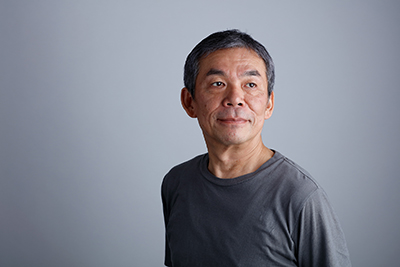
-
Product Designer
- Unit 10 : Equipment and facilities for manufacturing and medical care
10-01 Accessories and personal items for professional use / 10-02 Working tools and instruments / 10-03 Agricultural tools and equipment / 10-04 Equipment and facilities for production and manufacturing / 10-05 Medical equipment and facilities / 10-06 Materials and parts / 10-07 Manufacturing and production technique / 10-08 Equipment and facilities for research and experiment / 10-09 Other product for medical use and manufacturing
This year, we saw a great number of attempts to compensate for the shortage of experts in the industrial/medical care field.
One of the reasons for this shortage of experts is the declining birthrate and the aging population. For example, in the medical care field the number of elderly people who require care and medical treatment is increasing at a rate faster than the supply of health care providers can keep up with. Generally, a high level of specialist knowledge and experience is required to handle industrial/medical care equipment, but training up skilled people takes time. Therefore, a lot of effort has been put into developing devices that can perform the same operations as skilled practitioners but without needing the specialist knowledge and experience.
Kubota’s rice planting machine "Naviwel" (19G100733), by using advanced digital technology, has made it possible, without any particular skills, to plant rice in properly spaced, straight lines with the appropriate amount of fertilizer. Yoshida’s root canal camera "Nanopict" (19G100749) can treat root canal without needing to rely on the senses of a skilled technician by making it possible to observe the deepest part of the root canal. Fujifilm’s ultrasonic imaging diagnostic device "iViz air" (19G100757) can easily and reliably carry out urinary output tests for medical treatment at home, and Canon Electronics’ dental milling machine "CE-TOWER MD-500" (19G100777) doesn’t need the hands-on skills of a dental technician.
These are all examples of attempts to solve problems by incorporating state-of-the-art technology. In contrast, Fujifilm’s tuberculosis diagnosis kit "SILVAMP TB LAM" (19G100752) uses the silver amplification technology used in photographic development to enable it to detect the tuberculosis germ at the same rate of reliability as machines that employ the latest technology. This is an excellent solution that takes into account the circumstances of developing countries where a lot of tuberculosis patients live, but who find it difficult to bring in advanced equipment that costs a lot of money.
Devices have always been developed to help compensate for the limits of humans’ abilities. This year’s development of equipment in the industrial/medical care field seems to be aiming to take this to an extreme level, in response to the shortage of specialists. Ultimately, they may create a situation where experts aren’t needed. We think careful deliberation is needed over whether that would be a good thing for us or not.

-
Interior Designer
- Unit 11 : Equipment and facilities for shop, office and public space
11-01 Furniture for shop, office, public space / 11-02 Display furniture for shop and public space / 11-03 Equipment and facilities for public space / 11-04 Kitchen equipment and facilities for professional use / 11-05 Equipment and facilities for professional use / 11-06 Lighting appliances for professional use / 11-07 Air conditioning equipment and facilities for professional use / 11-08 Building materials and equipment for commercial space / 11-09 Equipment and facilities for commercial space
There continues to be a focus on "work-style reforms." For the office environment, there has been an increase in ideas that allow people to select their optimal work scene, such as the introduction of workspaces without assigned seating where employees are free to move around. A work style without fixed seating allows employees to move about depending on their work and their mood, and encourages a more active way of working as it expands their choices as they can freely alternate between individual work and group work. For this way of working, it’s become necessary to consider how to reduce all the office things, and organize them with the individual. How should we think about the relationship between people, places and objects? From here on, it will surely all be organized including the overall way of thinking.
In the educational and learning environment, there is an increase of individual and various group work within the communal setting, with active learning that leads to voluntary study, and it is beginning to have more in common with office work styles.
In relation to shops, plans to build up local communities have garnered attention, with the development of products that make the most of local people, materials and local industries. Universities have also been included, and initiatives that strengthen local relationships in all directions and complete the whole process from manufacturing to consumption within the local region are proliferating.
Regarding public facilities and equipment, this year there were many public toilet/restroom products that were worthy of special mention. Installations like "Universally accessible toilets" and "Family booths," that endeavor to create an environment where everyone can have a pleasant experience in using them, have permeated our society. It’s important for us that an environment is created where everybody can feel good about spending time in, whether those people be foreign, elderly, wheel chair users, pregnant or if they are accompanied by a baby. Many companies have timed their new product development to coincide with the opportunity provided by Tokyo hosting the 2020 Olympics and Paralympics, with the hope that the cleanliness of Japan’s public toilets will be gain attention from the people of the world. There were a number of products developed that made us feel that way. The pleasant experience for everyone should not just apply to the users, but also to the people who work in them. There were also products that had thought up ingenious ideas about how to use toilets even during times when the water supply is suspended or during a disaster. The value of "Normality" (19G110832) was recognized anew. It utilized lessons learned from disasters.
Finally, there was an increase in initiatives that considered environmental problems like disposable plastics. We hope that from here on there will be an increase in activity in regards to deepening our understanding of proposed future problems, as well as ideas aimed at solving them. And, regardless of the category, we think you can’t leave out "designs that people feel comfortable with."

-
Architect
- Unit 12 : Housing (personal residence, small sized apartment)
12-01 Commercial/industrialized housing / 12-02 Detached house / 12-03 Cohousing / 12-04 Small sized housing complex / 12-05 Construction method for housing / 12-06 Service and system for detached and small-sized housing /HEMS(Home Energy Management System)
This year, we had many entries for housing that realizes a certain lifestyle, especially those that have a rather homemade feel. What I mean by "a homemade feel" is that, instead of possessing a fixed form, it takes a practical approach of giving it shape while developing it. The screening process was quite enjoyable in that sense.
The striking trend was that, just like last year, many showed the effort to incorporate or merge the place for work and business with the living space. Integrating the living space with space that takes other people into account naturally brings attention to detail and consideration to the living area.
We saw more painstaking works in which the boundaries between houses and plots are more seamless. The way brick walls are utilized has especially evolved to create living spaces that incorporate the neighborhood. Such trend is seen in both newly built and renovated houses. I see this as a socially important proposal. Recently, there have been many news stories on tragic accidents caused by collapsing brick walls. But these casualties are not new. These accidents do not simply go away because brick walls are there for privacy. These painstaking works demonstrates the importance of designing boundaries while also taking into account people’s lifestyles and spatial design.
The idea of addressing issues by the diversification of residents in terms of lifestyle and generation might not have drawn much attention until recently. Regarding the issues involving suburban residential areas with single-family houses, which are socially acknowledged to a degree, utilizing vacant homes as shared houses and opening up the exterior construction are some examples of design intervention to address such issues.
Many entries from this year’s Good Design Award have left an impression that they engaged in active consideration for occupants’ lifestyle, one in which that involves the outside world and people. A group of housing design that supports and brings shape to such activeness has emerged. In last year’s review, I mentioned that I could catch a glimpse of the trend in which housing was not seen as a complete product in itself. I also posed the question, saying: "What is the objective in housing design?" I felt that this year’s entries have shown more of a hands-on approach than last year.
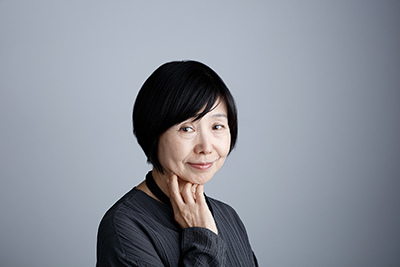
-
Architect
- Unit 13 : Housing (medium to large sized housing complex)
13-01 Medium/large sized housing complex / 13-02 Service and system for housing complex/HEMS(Home Energy Management System)
This year’s award-winning works have demonstrated a strong movement toward a fundamental revolution in multi-unit housing. As collective housing, such as multi-family units, elderly care facilities or shared housing for young people, has generally been divided by function according to the demographics of occupants, the primary purpose (i.e. whether it is used as a residence or not), etc. until recently, we came across cases in which such different functions are actively mixed together to generate new meaning to housing. These cases not only explore a new way of collective living, but also have great potential in bringing a spillover effect on the community and society. Some are already contributing to the local communities. The keyword here is multi-generation. As newly built apartments in the past had been uniform in its room arrangements and therefore attracted residents in similar age groups, all the residents of such an apartment often have become old over the course of years. Considering this situation in Japan, attempts toward multi-generational housing seems vital. As many entries this year were rather large in size, I am looking forward to seeing this trend in small- and medium-scale housing.
Another trend this year is the combining of work and living spaces as seen in buildings that have offices, shared housing and business facilities. In Japan, a maturing society, the place utilized for residence must also offer the place for work. For such complexes to hold more of a significance than just being shared buildings, they must jump through different hoops, including legal ones, but we are hopeful that winning the Good Design Award will bring more attention to excellent cases that set a good example, leading to further development in diverse ways.
Amid the forward-thinking efforts, it is important to remember that medium- to large-scale communal buildings are an important component in the town landscape and that the quality must be improved upon in line with the existing approach of making construction-based proposals for multi-unit housing. In this regard, we were able to encounter many excellent works in which the façade and ground-level floors were highly refined. I hope that these cases will create opportunities to widely share the values required for collective housing behind the works with other countries as well as within Japan.
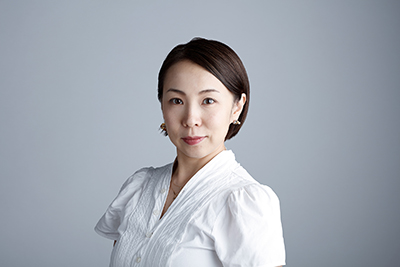
-
Architect
- Unit 14 : Construction for industry, commercial and public facility
14-01 Construction/space design for industry / 14-02 Construction/space design for commercial use / 14-03 Construction/space design for public facility / 14-04 Landscape, civil engineering structures / 14-05 Block and community development / 14-06 Construction method for industry, commercial, public facility
Just like last year, Unit 14 received quite a few entries this year. This category is extremely diverse and includes offices, universities, schools, preschools, commercial facilities, local community centers, museums, landscape and construction methods. The challenging part of screening this unit is that we must evaluate things that are completely different in terms of program and judgement criteria, as in comparing offices against preschools. The evaluation axis for architecture for the Good Design Award is different from that of other architectural awards. The judges of the Good Design Award evaluate whether each entry presents a new direction for future architectural works and sets a good example that could be emulated. The hope is that winning the award leads to gaining wide recognition, which in turn results in improving the quality of subsequent projects.
During the screening process, some judges mentioned that this year’s entries had made less of an overall impact compared to last year, with fewer entries possessing definite award-winning qualities. We received many entries from other countries this year, which generally seemed to have a higher standard than last year’s. Those selected in the end have been found appealing with meticulousness, whose proposals are various in a balanced way, I believe. However, there might have been fewer works that have an overwhelmingly strong quality that would impress those not in the field of architecture.
All the units of this year’s Good Design Award have shared the judgement criteria of "beauty and resonance." This is perfectly in line with the evaluation criteria for the recent architecture industry. In addition to possessing beauty as an object, it must gain empathy and understanding from the society. The screening process made me realize that the desired role of architecture has become diverse. In other words, architecture has become more and more prevalent in different fields. I think that there are various approaches in architecture, and products which are developed flexibly across those approaches will receive high praises.
Architecture is the result of collaboration between the architect and the people such as the client and developer that raise the initial "question." The evaluation process in the architecture field for the Good Design Award pays attention to the quality of the "question" raised as well as the resulting design, which means not only the architect but also the questioner are screened. The reason why we had the impression that the entries lacked an impact this year could be attributed to the fact that there were no sufficient "questions" raised. We hope that an interesting "question" will arise and wonderful architecture will come out of it in response.

-
Art Director
- Unit 15 : Media, Contents and Packaging
15-01 Media / 15-02 Contents for the general public / 15-03 Contents for business / 15-04 Method for advertising/PR / 15-05 Exhibition / display / 15-06 Branding / CI / VI / 15-07 Font / 15-08 Packaging for the general public / 15-09 Packaging for professional use / 15-10 Application, software for the general public / apps for smartphones and tablets
Unit 15 covers a diverse range, including package design, advertisement, websites, apps, media contents, branding and fonts. The category is so diversified that the applicants may be wondering what the judging criteria are. In short, I think it is whether the entry delivers aesthetics and strength as package × design. According to a dictionary, "package/packaging" is defined as the "covering, wrapping material; to wrap, to combine items as one unit." Needless to say, packaging must look aesthetically pleasing as what makes up the exterior. Equally important is the way the information is put together in the package. The following lists the noteworthy entries we have come across this year in the screening process.
First of all, "Eneloop" (19G151175) and "LOHACO Water" (19G151169) were two entries that gave us a glimpse of the future of package design. With more and more consumers expected to make purchases online in the days ahead, the both packaging designs have been successfully optimized to differentiate online products with the packaging from products sold in stores.
"Odakyu Line Noborito Station Doraemon Signage" (19G151201) and "Sotetsu Design Brand Up Project" (19G151202) both offer the answer to the question of how you "package" public space such as train stations. The former uses a cartoon character in a controlled way without making the space appear childish. The latter has been elaborated even on details, from concept development to design rules, in order to bring a unified look to the stations along Odakyu Line.
It is going to be the top priority for companies in their branding efforts to come up with the perfect way to incorporate user experience into their products. The two entries that demonstrated excellent methodologies were "Unkai NAVI" (19G151181) and "50 Experiences in Nature to Channel Your Primitive Powers" (19G151209). Evolving into a book from web contents, the latter especially shows through the company’s strong passion and dedication.
"NHK Reminiscence Library" (19G151190) is brilliant in that it recycles NHK’s huge video archive to offer contents that help prevent the development of dementia.
Last but not least, another noteworthy entry is "Neue Frutiger World" (19G151207), the font that has been developed to support more than 150 languages all over the world. Considering the globalizing climate, it is surprising that there wasn’t anything like it before. This achievement involving the designers around the world have surely made a lasting contribution to the society.

-
Project Manager
- Unit 16 : System and Service
16-01 System/service for the general public / 16-02 Insurance/financial service and system / 16-03 Software for professional use / 16-04 System/service for professional use / 16-05 Social infrastructure system / infrastructure
Unit 16 deals with systems and services, which are rather abstract and hard to grasp. Examples of entries in this category include apps and services utilized at offices and services that make it more convenient to use elevators and air conditioning units. But then it is also the unit for systems that change the fundamental way of fishing and livestock industries for the better. In other words, Unit 16 gathers all the efforts made to "make things more convenient and smarter" in the future with the use of technology.
This may make people wonder. Pretty much everything in the world pursues to "make things more convenient and smarter" and naturally there are systems running in the background to make that possible. It made me pause and think for a minute whether this unit alone could handle all that. This is how much the entries for this unit well reflect the times we live in.
For example, more and more startup companies are entering the Good Design Award with a strong commitment. As seen in the taxi dispatching app and performance evaluation system for personnel, services that fully utilize AI and other state-of-the-art technology are becoming more prevalent in this unit.
This does not mean that the large corporations are slacking off. They are shifting their view and taking a dimensional perspective to take up the challenges in new arenas. What should the experience at airports be like? How do you improve the productivity at restaurants? What if we introduce an AI-powered camera for judging the speedy movements in gymnastics? By screening the entries in this unit, you get to see the accelerated progression of technology and its social contributions as well as the fierce competition involved.
I wonder how these advanced technologies would expand and enhance the experience. Happiness, gratitude and inspiration. Fun, comfort and surprise.
I am hoping that there will be more services that go beyond "making things more convenient and smarter" to offer experiences that "make our hearts sing." And I am rooting for such designs in this category. With that in mind, I have screened this year’s entries.
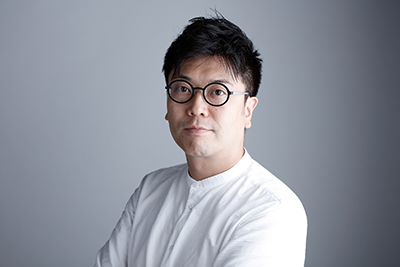
-
Designer
- Unit 17 : Business model and method
17-01 Business model / 17-02 Research and development method / 17-03 Awareness improvement, management method and project for industry / 17-04 Education/promotion/support method / 17-05 Awareness improvement for individual and public
This unit evaluates the business models and methods of corporations, organizations and individuals to sustainably offer a certain value to the world through their projects. Instead of dealing with tangible objects, it reviews intangible designs.
In general, business models tend to be looked at as something separate from the design of products, services and experiences. However, this screening panel has focused on how well business models are incorporated into products, services and user experiences.
The following lists the entries that especially stood out this year. We are hoping that these cases will lead the way in the field of business model design in the future.
1) "Drug2Drugs" (19G171293) is the world’s first AI-powered drug development support service utilizing simulation technology to search and design new drug candidates. Not only does it drastically reduce the time spent on new drug development, it greatly contributes to bringing costs down and improving the success rate. The expectations are high for this new project that will play a key role in saving many lives.
2) "Global Mobility Service" (19G171271) offers car loans at an appropriate interest rate to the poor and low-income population all over the world. Using IoT has made this possible. It is brilliant because this service is designed to give the people not only the chance to own cars, but also the opportunity to shape the future where they can find jobs with the car and break the cycle of poverty.
3) "BUNKITSU" (19G171281) is designed to motivate people to seek out new books by integrating a wonderful place and experience no bookstore has offered before with a unique system of charging an admission fee. In this digital-driven world, customization has progressed excessively, resulting in narrow-sightedness. This bookstore successfully provides a place where people can encounter a variety of wisdom.
While business models themselves are intangible, the design greatly impacts the people involved and the global environment. In other words, business models can be compared to personalities that reflect the vision and ethics of companies. In the future, companies are sure to be expected to create businesses that question the significance of technology and ruminate on the happiness of people and the earth.
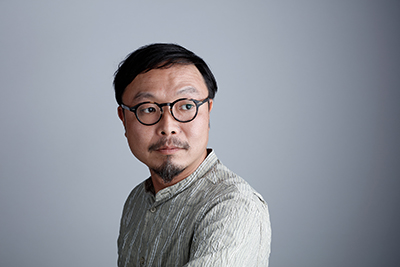
-
Designer/Creative Director
- Unit 18 : Project and activity
18-01 Regional/community development / 18-02 Social contribution / 18-03 Project and activity for the general public
The social agendas that have been seen with a panoramic perspective are becoming something more apparent as the resolution gets higher from environmental issues to minority rights. Trickling down from society to community and individual levels, the issues are becoming more familiar to us and more closely related to our lives.
Last year’s Grand Award winner Otera Oyatsu Club had shed light on the issues of child-rearing families with financial difficulties. This was a wonderfully compassionate project that has given new meaning and structure to the traditional benevolent offerings to temples. I heard that the activities have continued ever since to expand the network, which is perfectly in line with this year’s theme of "beauty and resonance."
The entries for this year have also demonstrated the strong dedication to solving issues by focusing on resonance and restructuring. The scale is quite diverse, ranging from dynamically designed and constructed objects that solve preset tasks to clear-cut solutions for small projects. It appears that the extent of activities has expanded greatly as well.
The significance of projects and activities that are expanding every year lies in whether they already possess a value as a platform and have great potential for further utilization. I believe this is driven by the people who look at a certain project and request it to be modified for the region where they live. Compassion and innovation behind it do not require a significant reform as they are based on realizing issues around us and the power to cross the boundaries.
While taking many forms, compassion is something that is beautiful, resilient and flexible, which could be found in the design concept that anyone can produce. The thoughts of individuals, the thoughts of the organizations, the thoughts of the community. The thoughts close to us. I hope we can challenge the issues we are about to face in an open platform. I dream that the humanity overflowing from each entry will change the society for the better.
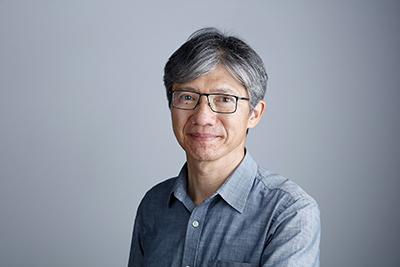
-
Ph. D. Design
- Unit 19 : Korea
This is my second time to be in charge of judging the entries from South Korea. Just like previously, the progressiveness of the leading companies in home appliances and information equipment caught my eye. The technological innovation that has rapidly advanced in recent years such as with AI is surely the driving force behind the development of new products. With a high degree of perfection and quality, these products left a great impression on me. However, it made me worry that these wonderful products might go through the same issue that Japanese home appliances did in the past, where they become widespread in their own country but are unsuccessful overseas due to their extreme progressiveness. This made me aware that it will probably become increasingly important in the near future to reflect on what features to add while reviewing the possibilities of leading technology as well as the users’ needs.
In this unit, there have always been many entries for products for managing health. You can see that there is a lot of interest in South Korea for this genre, from drinking water to air purifier, and to esthetic and haircare. The great number of products in this category tends to force companies to seek differentiation through external appearance rather than features. I am hoping to see more of a different approach. Some products did demonstrate some unique features.
Overall, the entries seemed very diverse. Although still relatively few, some applicants have expanded the genre to include products that have not been seen before, such as projects and branding efforts for regional reconstruction, products for improving social infrastructure and products related to welfare and medical treatment, which I noticed. The design concept has diversified in Japan as the award recently started to include an assortment of activities and projects. The similar trend can be seen in Korea. Especially products and projects by small ventures demonstrated a fresh perspective that is different from Japanese companies possibly due to cultural reasons.
Just like in Japan, design in South Korea is expected to play an even more important role in the maturing society. I hope to see more design entries with greater extensiveness next year and beyond.
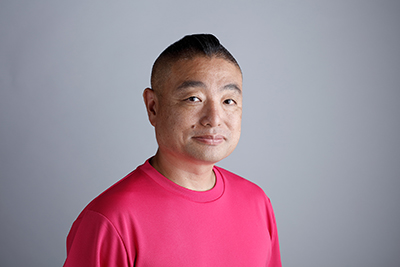
-
Architect/Designer
- Unit 20 : Taiwan
The first impression I had in screening this unit for Taiwan was that proposals focusing on local markets stood out. Among them, highly evaluated projects were the ones that rose out of focusing on a local perspective, instead of a global one, and being conscious of the Taiwanese culture and background.
While Taiwan has the background of accumulating high manufacturing technology as the production base for European brands, we found many proposals for industrial design focusing on only manipulating the styling. Maybe because of the preconceived notion of how the market trend and taste should be, the range of design was limited and the approach of seemingly maneuvering users was taken in some cases, which did not lead to high praises.
As for the genre of interior design, especially that in housing, it was hard to make a fair and objective evaluation for interior projects that acted in response to the owner’s taste and had the luxury of well-situated land and steep budget. These were considered to be decorations and not design, thus were deemed to be outside the scope of the Good Design Award.
Renovation projects with a great historic background of Taiwan received great attention for not only modernizing the old architectural space that could otherwise be a burden on the local region, but also proposing a new way to connect with other people in the community.
Graphics and packaging displayed both meticulousness and boldness of Taiwanese designers through the design and printing processes. This category does not have that many entries so we hope to receive more in the future.
Last but not least, many entries regarding social contributions included activities on the grass-root level and those that demonstrated the strong connection between the individuals in Taiwan. I am looking forward to seeing more of these beautiful values unique to Taiwanese people. There were quite a few entries still in the initial phase thus too early to be evaluated, so I hope we can follow up on their development through the Good Design Award.

-
Product Designer
- Unit 21 : China, Hong Kong
Applications from China for the Good Design Award is increasing every year and this year was no exception. We received a much greater number of entries than last year.
It is noteworthy to mention that the quality of the entries has improved significantly. This is true especially with home appliances and precision machinery. Multiple Chinese corporations with a global presence have raised the product standards considerably, encouraging other manufacturers and brands to follow suit with their high-quality design and product development. Paying great attention and care down to details, the beautifully designed products were manufactured with active utilization of new materials. We could see first-hand why China is referred to as "the world’s factory."
With the advancement of cashless society and EC as well as the popularization of smart appliances, people’s lifestyle has changed over time, and coupled with it new social issues have risen. So companies have started to incorporate projects to address those newly emerging social issues into the products and services that they offer.
It is also worthy to note that, in the process of evaluating this unit, we came across a few entries in which major corporations took the initiative to tackle environmental issues and made efforts for raising awareness. Although we know that these efforts are part of publicity, they are receiving great interest from the consumers as demonstrated by the fact that a significant percentage of the vast population living in China have actively engaged in these services and activities and those efforts have already achieved a big impact and great success.
The screening process for this unit reminded us of how China as a country enjoying a great leap forward in the world economy takes a progressive yet cultural approach in developing products and services.


